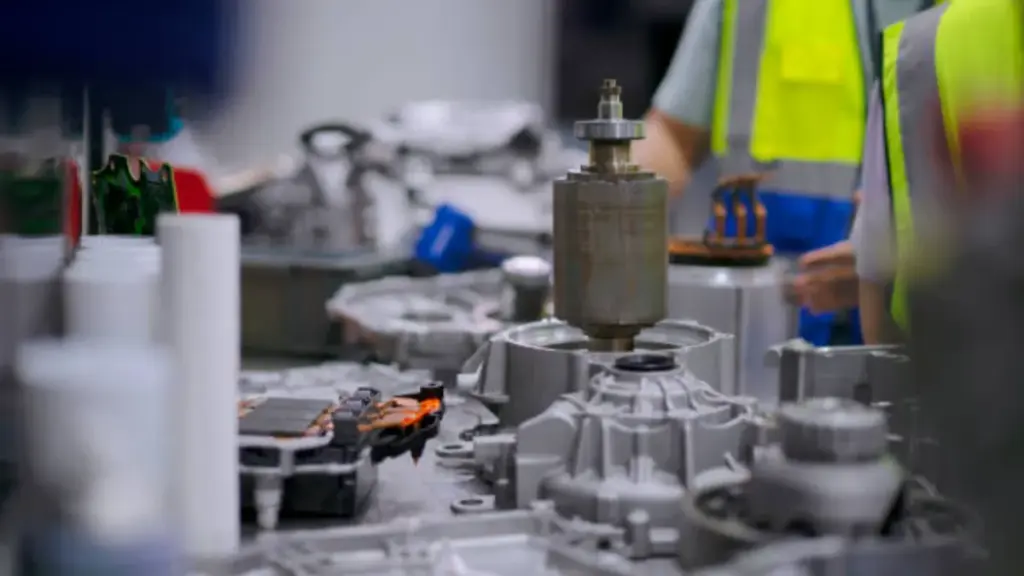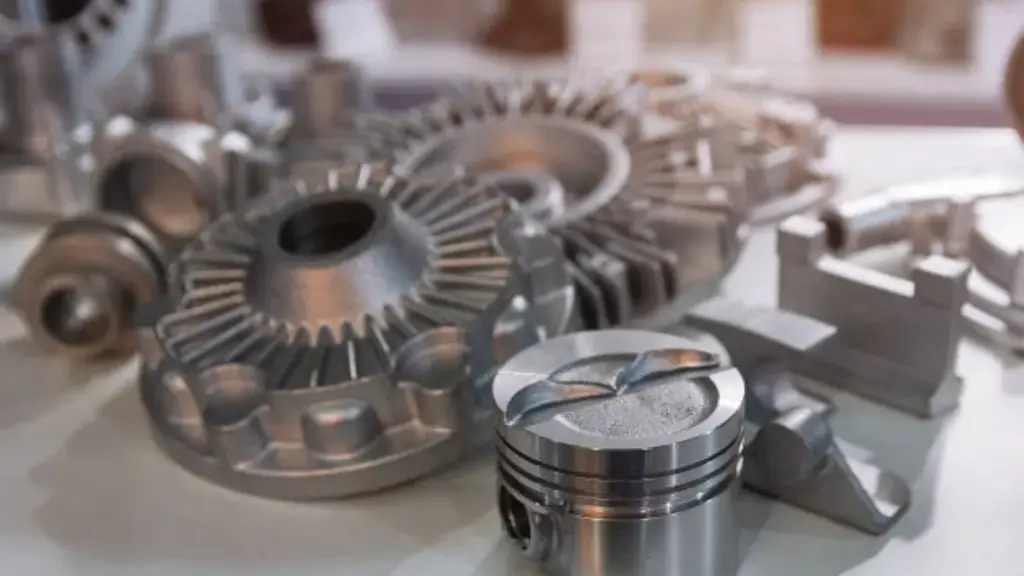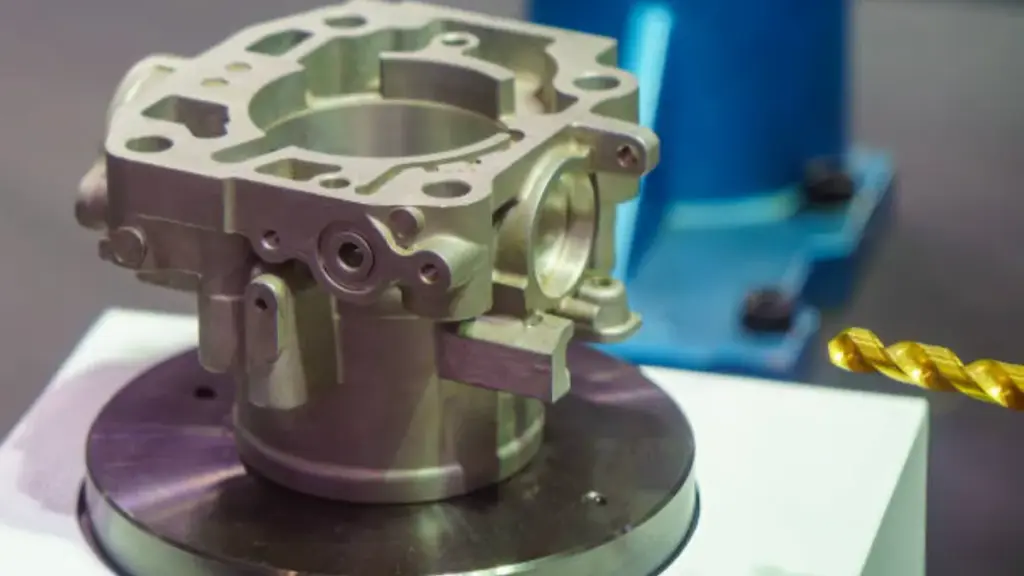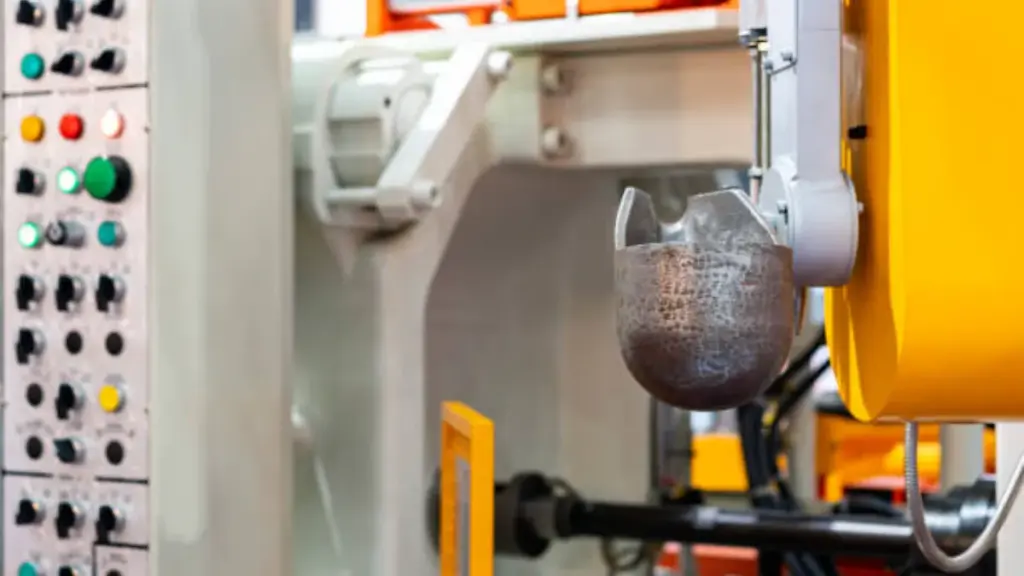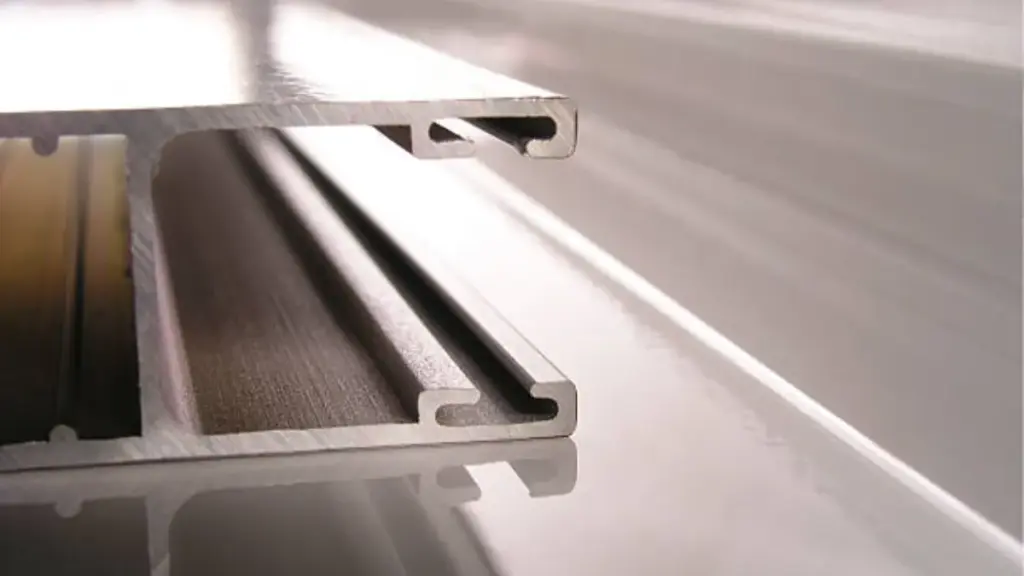Quando se trata de materiais de metal, Ferro fundido e aço são duas opções comumente usadas em vários setores. Ambos têm propriedades únicas que os tornam adequados para diferentes aplicações. Compreender as principais diferenças entre ferro fundido e aço é essencial para escolher o material certo para o seu projeto.
O que é ferro fundido?
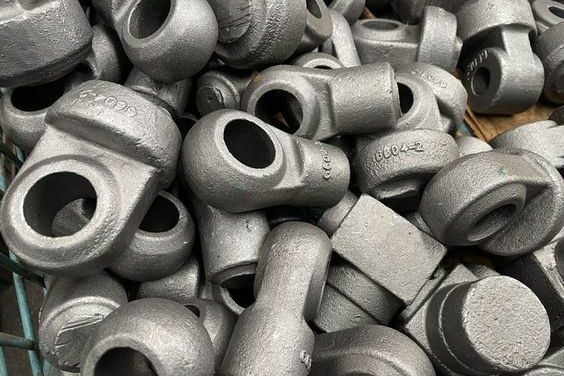
O ferro fundido é um tipo de liga de ferro-carbono, conhecida por suas propriedades e aplicações distintas. Ao contrário de aço, O ferro fundido contém um maior teor de carbono que varia de 2-4%. Este nível elevado de carbono contribui para sua dureza e fragilidade características.
Dureza de ferro fundido, A retenção e distribuição de calor tornam -o popular para várias aplicações, especialmente na cozinha. Sua composição versátil é ideal para fabricar utensílios de culinária, como frigideiras e fornos holandeses, garantindo resultados consistentes e confiáveis para chefs e cozinheiros domésticos.
Tipos de ferro fundido
Existem vários tipos de ferro fundido que variam em composição e propriedades, cada um personalizado para aplicações específicas. Alguns tipos comuns incluem:
- Ferro fundido cinza: Conhecido por seus flocos de grafite e excelente usinabilidade, usado em blocos de motor e máquinas.
- Ferro fundido branco: Rico em carboneto e altamente resistente a desgaste, Adequado para bolas de moagem e forros de moinho.
- Ferro fundido dúctil: Contém grafite nodular para ductilidade e força aprimoradas, usado em componentes automotivos e máquinas pesadas.
- Ferro fundido maleável: Tratado termicamente para melhoridade e ductilidade aprimoradas, Ideal para acessórios para tubos e equipamentos agrícolas.
- Ferro de grafite compactado (CGI): Estrutura de grafite exclusiva para alta condutividade e força térmica, preferido para peças de motor automotivo.
Da resistência de desgaste superior à ductilidade aprimorada, Cada tipo de ferro fundido oferece vantagens distintas para vários fins industriais e comerciais.
O que é aço?
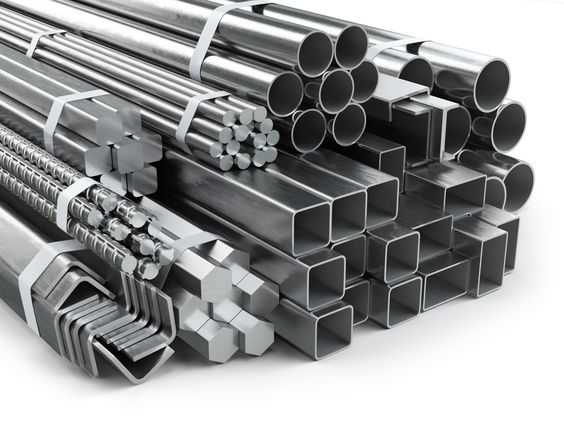
Aço, por outro lado, é uma liga de ferro e carbono em que o teor de carbono é tipicamente menor que o de ferro fundido. É conhecido por sua força, durabilidade, e flexibilidade, tornando -a uma escolha popular para uma ampla gama de aplicações em todas as indústrias. Com suas propriedades excepcionais, O aço é utilizado na construção, Fabricação automotiva, produção de máquinas, e inúmeros outros setores.
Tipos de aço
Existem vários tipos de aço com diferentes composições e propriedades, cada um projetado para aplicações específicas.
- Aço carbono: Aço padrão com níveis variados de teor de carbono, fornecendo diferentes características de força e dureza.
- Liga de aço: Aço ligado a elementos como níquel e cromo para melhorar as propriedades, como resistência à força e corrosão.
- Aço inoxidável: Contém cromo para resistência à corrosão, Disponível em graus diferentes, como austenítico e martensítico para várias aplicações.
- Aço da ferramenta: Aço duro e resistente usado para aplicações de ferramentas e matrizes em ferramentas de corte e equipamentos industriais.
- Aço de alta velocidade: Conhecido por suas propriedades de resistência ao calor e desgaste, comumente usado em ferramentas de corte e aplicações de usinagem.
Cada tipo de aço oferece propriedades exclusivas adequadas para aplicações específicas, De componentes estruturais a ferramentas de corte e peças de máquinas.
Ferro fundido vs.. Aço, Qual é a diferença?
| Propriedade | Ferro fundido | Aço |
| Teor de carbono | Maior teor de carbono (2-4%) | Menor teor de carbono (<2%) |
| Condutividade térmica | Menor condutividade térmica | Maior condutividade térmica |
| Força de compressão | Menor força e mais frágil | Maior força e resistência |
| Resistência à corrosão | Mais propenso a ferrugem e corrosão | Melhor resistência à corrosão |
| Resistência ao impacto | Mais quebradiço e propenso a fraturar | Mais resistente e mais resistente ao impacto |
| Castabilidade | Excelente castabilidade para formas complexas | Mais desafiador para lançar |
| Aplicativos | Utensílios de cozinha, Blocos do motor, etc.. | Construção, automotivo, aeroespacial, etc.. |
| Custo | Geralmente mais barato | Geralmente mais caro |
Teor de carbono
Uma das principais diferenças entre ferro fundido e aço é o teor de carbono. O ferro fundido normalmente contém 2-4% carbono, enquanto o aço contém menos de 2% carbono. Esse maior teor de carbono dá à ferro fundida sua dureza e fragilidade, enquanto o aço é conhecido por sua força e ductilidade.
Condutividade térmica
Outra diferença importante entre ferro fundido e aço é sua condutividade térmica. O ferro fundido tem uma menor condutividade térmica que o aço, o que significa que mantém o calor melhor e o distribui de maneira mais uniforme. É por isso que o ferro fundido é comumente usado em utensílios de cozinha que requerem aquecimento uniforme.
Força de compressão
Quando se trata de força de compressão, O aço é tipicamente mais forte que o ferro fundido. O aço tem uma resistência à tração e resistência à tração mais alta, tornando -o mais adequado para aplicações que requerem alta resistência e durabilidade. Ferro fundido, por outro lado, é mais quebradiço e propenso a fraturar sob cargas altas.
Resistência à corrosão
O aço é mais resistente à corrosão do que o ferro fundido. Isso ocorre porque o aço pode ser ligado a outros elementos, como cromo e níquel, para melhorar sua resistência à corrosão. Ferro fundido, por outro lado, é mais propenso a ferrugem e corrosão se não for mantido adequadamente.
Resistência ao impacto
O aço é conhecido por sua resistência e resistência ao impacto, tornando -o adequado para aplicações que requerem alta durabilidade e resistência ao impacto. Ferro fundido, por outro lado, é mais quebradiço e propenso a fraturar sob impacto. Isso faz do aço uma escolha melhor para aplicações em que a resistência ao impacto é crítica.
Castabilidade
Uma das vantagens do ferro fundido é sua excelente castabilidade. O ferro fundido pode ser facilmente lançado em formas e desenhos complexos, tornando -o ideal para aplicações que requerem detalhes complexos. Aço, por outro lado, é mais desafiador para lançar e pode exigir processamento adicional para alcançar a forma desejada.
Aplicativos
Tanto o ferro fundido quanto o aço têm uma ampla gama de aplicações em várias indústrias. O ferro fundido é comumente usado em utensílios de cozinha, Blocos do motor, e estruturas de máquina -ferramenta. O aço é usado na construção, Fabricação automotiva, aeroespacial, e construção naval, entre outras indústrias.
Custo
O custo de ferro fundido e aço pode variar dependendo da nota e qualidade específicas do material. Em geral, O aço é mais caro que o ferro fundido devido à sua maior resistência e durabilidade. No entanto, Os benefícios de longo prazo do uso de aço geralmente superam o custo inicial.
Ferro fundido vs.. Aço, O que é melhor?
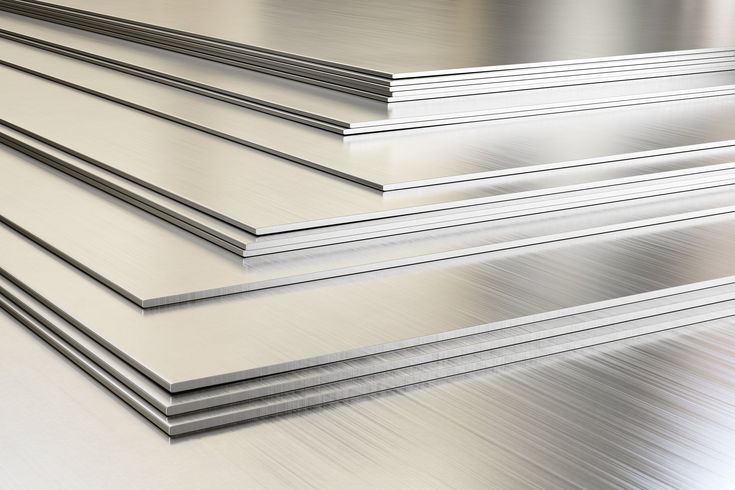
Prós e contras do ferro fundido
Prós de ferro fundido
- Excelente retenção e distribuição de calor
- Versátil para fabricar utensílios de cozinha e máquinas pesadas
- Material durável e duradouro
- Fornece uma superfície de cozimento exclusiva para melhorar os sabores
- Relativamente barato em comparação com outros materiais
Contras do ferro fundido
- Mais propenso a ferrugem e corrosão
- Pode ser pesado e pesado para lidar
- Frágil e propenso a rachaduras se não forem tratadas corretamente
- Requer tempero e manutenção para evitar ferrugem
- Limitado em termos de complexidade da forma em comparação com outros materiais
Prós e contras do aço
Prós de aço
- Alta resistência e durabilidade
- Versátil para uma ampla gama de aplicações
- Excelente resistência à corrosão, especialmente em aço inoxidável
- Reciclável e ecológico
- Pode ser facilmente fabricado e personalizado para várias necessidades
Contras do aço
- Pesado e pode ser complicado para lidar
- Suscetível a ferrugem se não for adequadamente protegido
- Pode ser mais caro do que alguns outros materiais
- Condutividade térmica limitada em comparação com materiais como alumínio
- Alguns tipos de aço podem ser desafiadores para soldar ou trabalhar com
Se você está procurando por alta qualidade Serviços de fundição de matriz de metal, Bian Diecast é a escolha perfeita. Com anos de experiência e experiência em fundir alumínio, ferro, e aço, Podemos ajudá -lo com suas necessidades de elenco. Entre em contato conosco hoje para saber mais sobre nossos serviços.
Conclusão
Para concluir, A escolha entre ferro fundido e aço depende dos requisitos específicos do seu projeto. Enquanto o ferro fundido é conhecido por sua dureza e retenção de calor, O aço oferece resistência e durabilidade superiores. Se você precisa de um material que ofereça força superior, retenção de calor, ou resistência à corrosão, Há uma solução de fundição de metal que atende às suas necessidades. Escolha o material certo para sua aplicação e aproveite os benefícios de componentes de metal de alta qualidade.
Perguntas frequentes
1. O ferro fundido é mais forte que o aço?
Enquanto o ferro fundido é mais difícil que o aço devido ao seu maior teor de carbono, O aço é geralmente mais forte e mais durável que o ferro fundido.
2. O que é feito de ferro fundido de?
O ferro fundido é feito principalmente de ferro com alto teor de carbono, normalmente variando de 2-4%. Além de ferro e carbono, O ferro fundido também pode conter outros elementos, como o silício, manganês, enxofre, e fósforo.
3. Como saber se algo é fundido fundido?
Você geralmente pode dizer se algo está de ferro fundido por sua aparência e peso. O ferro fundido é mais pesado e mais quebradiço que o aço, e geralmente tem uma textura áspera e marcas de fundição visíveis.

